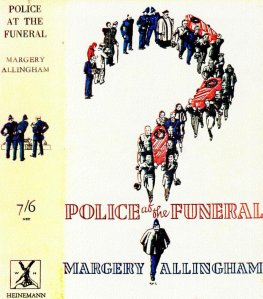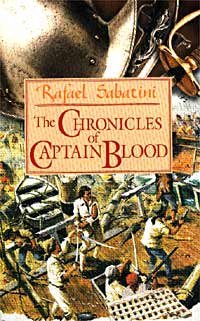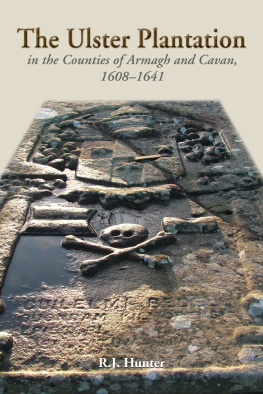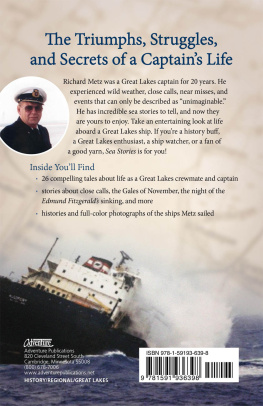CAPTAIN CUELLAR'S
Adventures in Connacht and Ulster,
A.D. 1588.
T HE publication of a work entitled "La Armada Invincible" [Madrid, 1885], by Captain Cesareo Fernandez Duro, a Spanish naval officer, has been the means of bringing to light many fresh and interesting particulars relating to this ill-fated venture; and, though the incidents narrated are, as might be expected, viewed from the Spanish standpoint, yet the history is written in a spirit of moderation, and gives evidence of great research.
Amongst the valuable documents which have been collected and printed by Captain Duro, that having for its title "Letter of One who was with the Armada for England, and an Account of the Expedition," is of most lively interest to us, seeing that it presents a graphic picture of the North and North-West of Ireland in 1588, drawn by one who was an actual eye-witness of what he describes.
FIGUREHEAD OF A SPANISH GALLEON
WRECKED AT STREEDAGH, 1588.
(Now in possession of Simon Cullen, J.P., Sligo.)
[]
Before proceeding, it may be well to observe that these adventures have already been dealt with by several writers. The Nineteenth Century, September, 1885, contained a valuable and interesting paper, entitled "An Episode of the Armada," by the Earl of Ducie. In Longman's Magazine [September, October, and November, 1891] appeared "The Spanish Story of the Armada," by J. A. Froude; and in the Proceedings, Royal Irish Academy, 1893, Professor J. P. O'Reilly contributed a paper, entitled "Remarks on Certain Passages in Captain Cuellar's Narrative."
The present paper has been written with the desire to identify some of the places visited by Cuellar while in Connaught and Ulster. His references to these places are, as might have been expected from a foreigner, in many instances obscure; and in order to correctly trace his wanderings, and identify the spots he visited, an intimate acquaintance with the local topography of the district is essential.
Sometimes the clue afforded by his narrative is so slender, that anyone unfamiliar with the localities intended might easily miss the meaning, and be led to an entirely wrong conclusion. The present writer has had the valuable assistance of R. Crawford, C.E., late Professor of Engineering, T.C.D., an accomplished Spanish scholarnot merely a translatorwho possesses a practical acquaintance with the idioms of the language. By this knowledge, Mr. Crawford has been able to elucidate many obscure passages in the Spanish book, which would otherwise have proved stumbling-blocks in the way of a proper understanding of the author's meaning. Mr. Crawford has made a literal translation of the whole of Cuellar's letter, which forms the second part of this book. A careful perusal of Mr. Crawford's introductory remarks, and of his translation, will well repay the reader, and is, in fact, needful for the proper understanding of the subject-matter of these pages.
Before entering on Cuellar's adventures on Irish soil, it may be as well to refer to an evident error into which Mr. Froude has fallen in his description of the wreck of the three vessels in Sligo Bay, in one of which Cuellar was. In the article before referred to, the following passage occurs: "Don Martin, after an ineffectual struggle to double Achill Island, had fallen back into the bay, and had anchored off Ballyshannon in a heavy sea with two other galleons. There they lay for four days, from the first to the fifth of September, when, the gale rising, their cables parted, and all three drove on shore on a sandy beach among the rocks. Nowhere in the world does the sea break more violently than on that cruel, shelterless strand," etc. Now, the facts disclosed by Cuellar's narrative, and by other contemporary writers, show that these Spanish ships were not at all near to Ballyshannon; but having been caught in the violent gales which were then raging round the coast, they were disabled, and being at the best of times unwieldy and difficult to steer, they drifted down from the north, and, failing to double Erris Head, were drawn into Sligo Bay, where they anchored about a mile and a half off shore, in the hope of being able to repair damages, and, when the gales subsided, proceed on their homeward voyage.
Don Francisco Cuellar was captain of the San Pedro, a galleon of twenty-four guns, which belonged to the squadron of Castile. The account of Cuellar's adventures, as detailed by himself, are related in the letter to which reference has been made. This document was discovered in the archives of the Academia de la Historia, in Madrid, where it had lain in oblivion for three centuries. Passing over the first part of the letter, which relates his adventures in the San Pedro, which sustained great damage in an engagement with English vessels off the coast of France, being in a leaky and unseaworthy condition, owing to the number of "shot holes," the San Pedro, by order of the mate (Cuellar having retired to take some rest after the fight), moved a short distance away from the Admiral's ship, for the purpose of carrying out some repairs to the damaged hull. This action on the part of the San Pedro raised the anger of the Admiral, who ordered Cuellar and another officer to be hanged at the yard's arm. Fortunately for Cuellar this unjust sentence was not carried out in his case, chiefly through the friendly offices of the Judge AdvocateMartin de Aranda.
But Cuellar was no longer left in command of the San Pedro: he henceforward sailed in the vessel of the Judge Advocate, who was also styled Provost Marshal. Having passed round the north coast of Scotland, the vessel in which Cuellar was, in company with two other shipsall of large tonnageencountered head winds and rough weather. Passing Tory Island, they were endeavouring to clear Erris Head on the Mayo coast; but the storms increasing, and the sea running high, they were unable to make that point. With shattered spars and torn canvas, and a weight of water in their holds, which the constant working of the pumps could hardly keep under, these vessels in a rough sea were unmanageable, and, drifting downwards, found themselves enbayed off the Sligo coast, where they hoped to find temporary anchorage. In the sailing instructions given by the Duke of Medina to the Spanish vessels on their return home, the following occurs: "The course that is first to be held is to the north-north-east, until you be found under 61 degrees and a half, and then to take great heed lest you fall upon the Island of Ireland, for fear of the harm that may happen unto you upon that coast. Then parting from those islands, and doubling the Cape in 61 12 degrees, you shall run west-south-west, until you be found under 58 degrees, and from thence to the south-west," etc. These particulars are valuable in showing the direction in which the Spaniards endeavoured to navigate their unwieldy craft. Captain Duro in his book refers to the frequency of the opening of the seams in the old Spanish ships, which defect he attributes to the excessive weight and height of the masts, whose leverage in heavy weather caused a strain on the hulls which necessitated the constant employment of caulkers.











